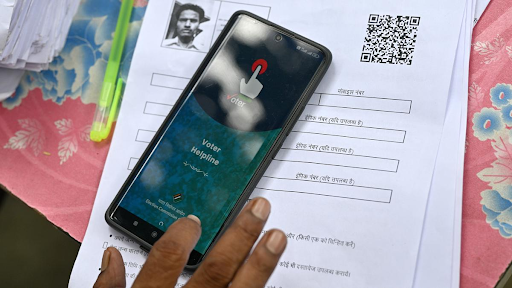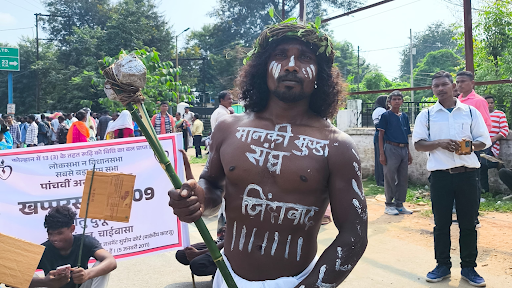Description

Copyright infringement not intended
Picture Courtesy: https://www.financialexpress.com/business/industry-pm-wani-revival-trai-proposes-reduction-in-high-internet-costs-by-telcos-3591053/#:~:text=The%20proposal%20by%20Trai%2C%20as,rates%20through%20public%20WiFi%20hotspots.
Context: The Telecom Regulatory Authority of India (TRAI) proposes to reduce broadband costs to make the PM-WANI scheme more viable.
About PM WANI scheme
- The scheme was launched by the Department of Telecommunication in 2020 to make the Internet more accessible and affordable by establishing public Wi-Fi hotspots across India.
- It focuses on creating a network of Public Access Points (PAPs) where people can connect to the Internet at low costs.
PM-WANI Framework
- Public Data Office (PDO): These are local entities like small shops; they set up and manage Wi-Fi hotspots that provide Wi-Fi access to the public.
- Public Data Office Aggregator (PDOA): They are responsible for managing and authorizing PDOs, ensuring they meet requirements and maintain service quality.
- App Provider: The ‘Wi-DOT’ app, helps users to connect PM-WANI hotspots.
- Central Registry: A central database that keeps track of all PDOs, PDOAs, and app providers.
- WANI (Wireless Access Network Interface): This technology enables users to connect to Wi-Fi hotspots that comply with PM-WANI standards.
Challenges
- Economic Viability: The initial high cost of internet connectivity for PDOs posed a significant barrier.
-
- Internet Service Providers (ISPs) and Telecom Service Providers (TSPs) have been charging high, making it financially unviable for small PDOs to participate.
- Maintaining low costs while ensuring high-quality service is important for the long-term success of the scheme.
- Technical Issues: The current system uses One-Time Password (OTP) for authentication, which can be inconvenient. The plan to replace OTP with Know Your Customer (KYC) will simplify access and enhance user experience.
- Infrastructure: Expanding the number of hotspots and ensuring reliable connectivity across diverse regions requires ongoing investment and technical support.
TRAI's Proposal
- TRAI has proposed to reduce the tariffs for Internet connections provided to PDOs.
-
- Currently, a retail broadband connection might cost between Rs 300-400 per month, PDOs are often billed up to Rs 8 lakh annually for similar bandwidth through leased lines.
- This high charge makes it financially unfeasible for many PDOs to operate.
- TRAI suggests that PDOs should be charged at rates similar to those for retail broadband connections, to make it more affordable for PDOs to offer public Wi-Fi services.
Way Forward
- Lowering the cost of Internet connectivity for PDOs will likely increase the number of public Wi-Fi hotspots. This can significantly enhance Internet access, especially in underserved and remote areas.
- Reducing the costs makes it easier for small businesses and local shops to participate in the PM Wani program.
- The National Digital Communications Policy 2018, set ambitious targets for the number of public Wi-Fi hotspots.
-
- The current number of hotspots—around 207,642—falls short of the goal of 5 million by 2020 and 10 million by December 2025.
- Lower costs could help achieve these targets more effectively.
- The Bharat 6G Vision aims to have 50 million public Wi-Fi hotspots by 2030. Achieving this requires significant growth in the number of hotspots, which could be facilitated by reduced connectivity costs.
|
Complementary Topics
|
|
Key Highlights of National Digital Communications Policy 2018
|
●Universal Broadband: Provide 50 Mbps broadband connectivity to every citizen.
●Gram Panchayat Connectivity: Achieve 1 Gbps connectivity for all Gram Panchayats by 2020, and upgrade to 10 Gbps by 2022.
●Connectivity for All Areas: Ensure that no area is left uncovered in terms of connectivity.
●Investment Attraction: Attract USD 100 billion in investments in the digital communications sector.
●Skill Development: Train one million individuals in new-age skills related to digital communications.
●IoT Expansion: Expand the IoT ecosystem to 5 billion connected devices.
●Data Protection: Establish a comprehensive data protection regime to safeguard privacy and choice.
|
|
Telecom Regulatory Authority of India (TRAI)
|
●It is a statutory body established under the Telecom Regulatory Authority of India Act, 1997.
●It ensures that the telecom industry operates fairly and efficiently, benefiting both consumers and service providers.
●In 2000, the TRAI Act was amended by an ordinance to establish the Telecom Disputes Settlement and Appellate Tribunal (TDSAT).
- This change transferred the adjudicatory and dispute resolution functions from TRAI to TDSAT, allowing TRAI to focus more on regulation and policy-making.
|
Source:
Financial Express
Businesses Standard
Geeks for Geeks
PIB
Wikipedia
|
PRACTICE QUESTION
Q. Consider the following statements in the context of the PM-WANI scheme:
1. The scheme was launched to exclusively improve internet access in urban areas
2. It was designed to ensure that internet access is only provided through government-controlled hotspots.
3. The Public Data Office Aggregator (PDOA) is responsible for establishing the Wi-Fi hotspots under the PM-WANI scheme.
How many of the above statements are correct?
A) Only one
B) Only two
C) All three
D) None
Answer: D
Explanation:
Statement 1 is incorrect: The PM-WANI scheme was launched to enhance internet access in rural and underserved areas, not exclusively in urban areas.
Statement 2 is incorrect: The PM-WANI scheme encourages local shops and establishments to provide Wi-Fi hotspots, not just government-controlled ones.
Statement 3 is incorrect: The Public Data Office Aggregator (PDOA) provides authorization and accounting services to Public Data Offices (PDOs), which are responsible for establishing the Wi-Fi hotspots, not PDOAs.
|













